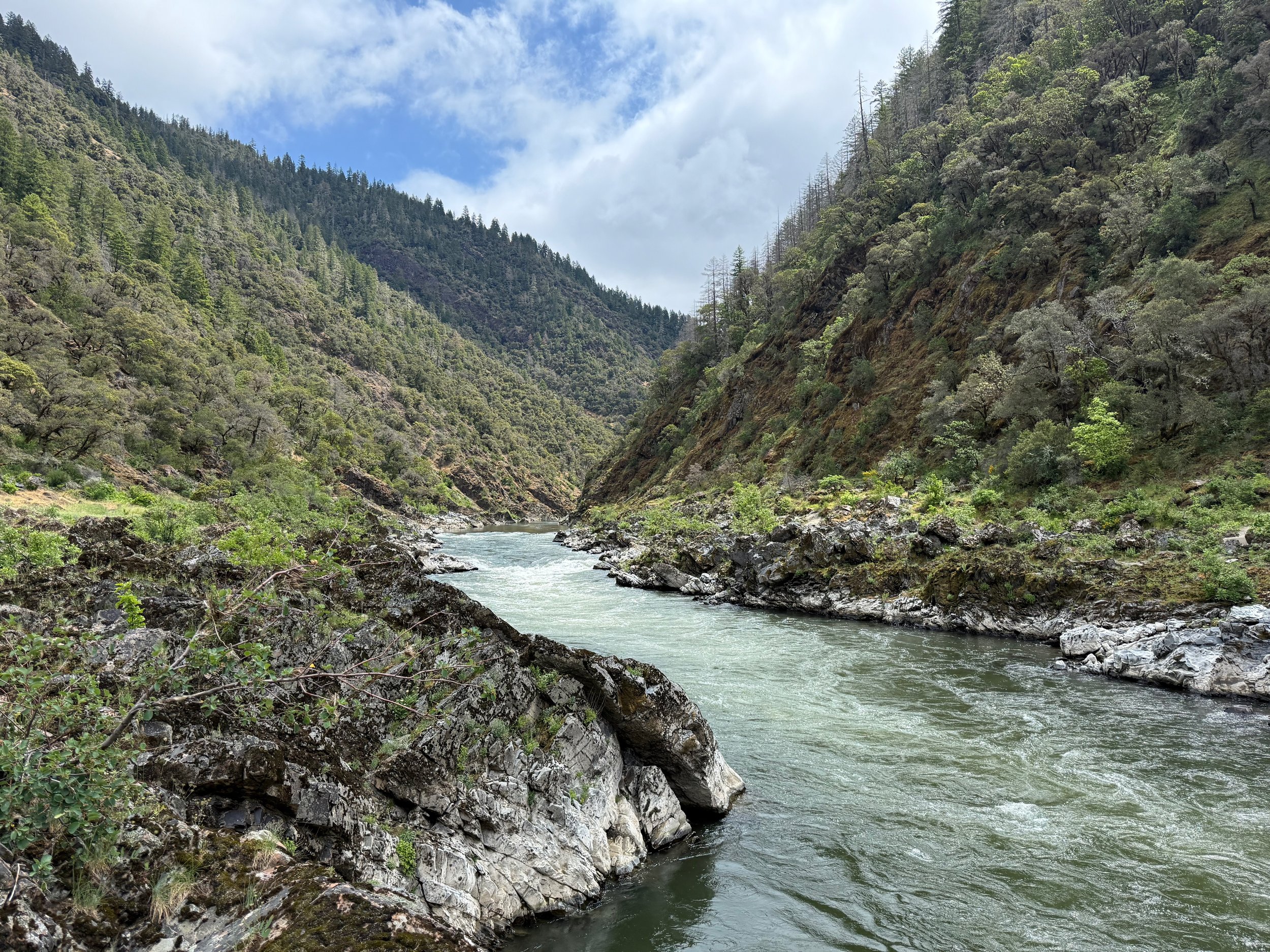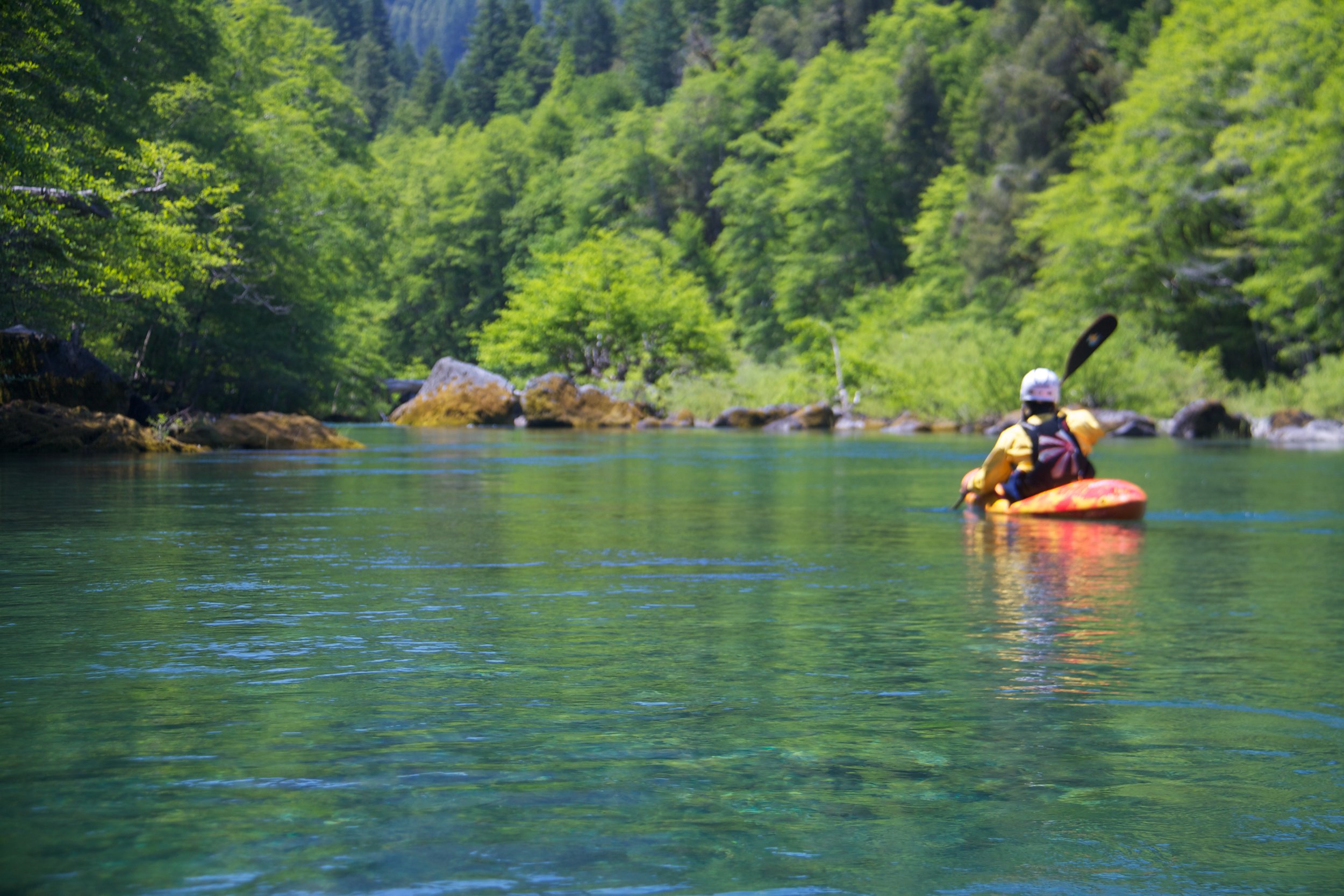June is National Rivers Month! Many people may not realize this, but our little corner of the U.S. boasts more Wild & Scenic Rivers than anywhere else in the lower 48 states. Click to learn more about the special waterways of the Klamath-Siskiyou bioregion.
Read MoreJune is National Rivers Month, and there are significant accomplishments to share this month around KS Wild’s effort to advance river conservation in the Klamath-Siskiyou bioregion. Read this blog to get a deeper understanding of the threats and opportunities for wild rivers across the region.
Read MoreDespite a 2017 ruling by the Obama Administration to put a 20-year moratorium on mining in the headwaters of the North Fork Smith River and Illinois River, a new mining company has emerged with plans to mine for nickel in the Baldface Creek watershed. Read more about KS Wild’s work protecting this region from mining here.
Read MoreThe Illinois Valley and the Wild Rivers Ranger District are at the very heart of KS Wild’s mission to protect wildlands, wildlife and watersheds. From botany to mining to logging, read about KS Wild’s recent conservation efforts in the Illinois Valley.
Read MoreTo be the eyes and ears of public lands defense requires KS Wild’s ForestWatch staff to be diligent in how we approach the scope of our work. Read about our plans for 2020, which defending public lands in a number of vital ways.
Read MoreFew experiences are more evocative of the Pacific Northwest than the sight of a salmon leaping a waterfall. People gather to watch as they make their way to ancestral spawning grounds each year at Rainie Falls on the Rogue River or the mouth of Wooley Creek on the Salmon River. Some rivers of the Klamath-Siskiyou are strongholds for wild salmon, including the federally listed Northern California/Southern Oregon Coho Salmon
Read MoreUnlike most of North America, we are extremely fortunate to live in a region in which five major wildland complexes have thusfar survived the pressures from logging, mining and road construction. It is our job and responsibility to protect these special places for the those who come after us and for their intrinsic value.
Read MoreWe are celebrating the recent victory to protect some of our most prized rivers from proposed industrial strip mining for a period of 20 years. We are hopeful that this victory will stand, even in the Trump administration.
Read MoreLong fights with no reward can feel tiresome and unrewarding after awhile. That’s why this May we held the first annual Return to the Wild, a rustic retreat along the Illinois River for female activists from around Southwest Oregon. Elders told stories of past trials and triumphs, we bonded and benefited from the therapy of nature, and were reinvigorated for our work ahead.
Read MoreThe Bureau of Land Management administers the public forests that surround communities in Western Oregon. These are our backyard forests! Places like the Wild Rogue River, the Applegate Valley foothills and rare plant hotspots in the Illinois Valley deserve our best conservation efforts.
Read MoreRegularly visited by botanists, it boasts the highest wildflower diversity in Oregon. Fisher folk appreciate the habitat it provides for steelhead and cutthroat trout, and it is well known by locals for always running clear. Before entering the Wild and Scenic Illinois River, it flows through a rugged, beautiful wilderness landscape. Part of this area, the South Kalmiopsis Roadless area was recommended as an addition to the Kalmiopsis Wilderness in 2004.
Read MoreThe Klamath-Siskiyou region is home to the largest expanse of wildlands on the West Coast. Some of these pristine wild areas are protected under the Wilderness Act as Wilderness Areas, but many other wilderness-quality lands are unprotected and face a variety of threats including logging, road-building, over-grazing, and irresponsible off-road vehicle use.
Read MoreThe mountains of the Kalmiopsis emerged from the ocean floor as result of geological uplift (rather than volcanism) and have been subject to folding and faulting ever since. As a result, the unique soils are packed with heavy metals including nickel, iron, chromium, and magnesium that make life hard for most plant life. To survive in this environment plants have had to evolve and adapt to get by in circumstances that would normally kill most flowering species. More than any other wilderness in the region, the Kalmiopsis is the home of oddball survivors.
Read MoreThe public lands in the Smith River Watershed are legendary for their unique botanical diver- sity and for providing clear, cold water to the largest un-damned river system on the West Coast. It is a stunning and spectacular part of America’s natural heritage that is literally like nowhere else on Earth.
Read More












